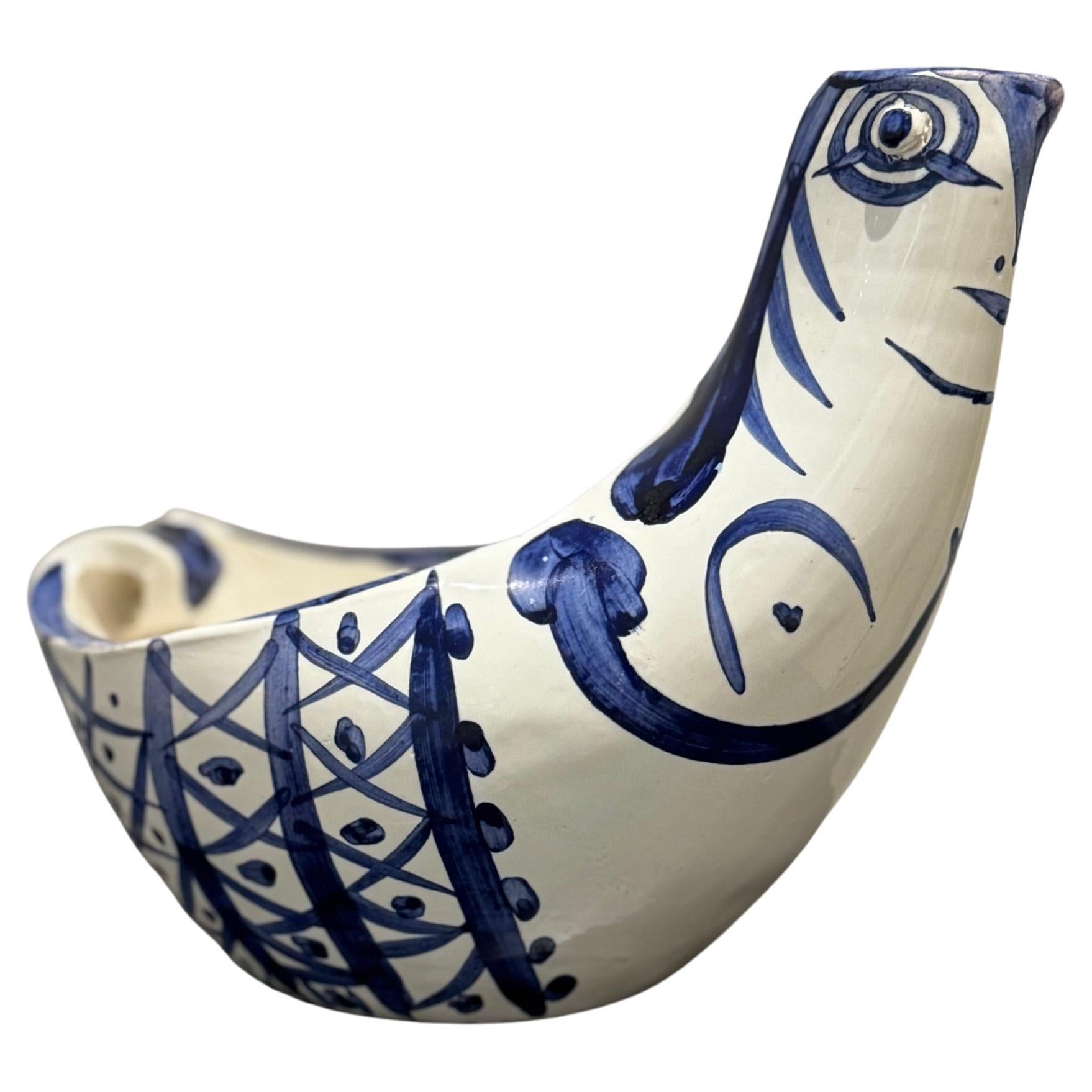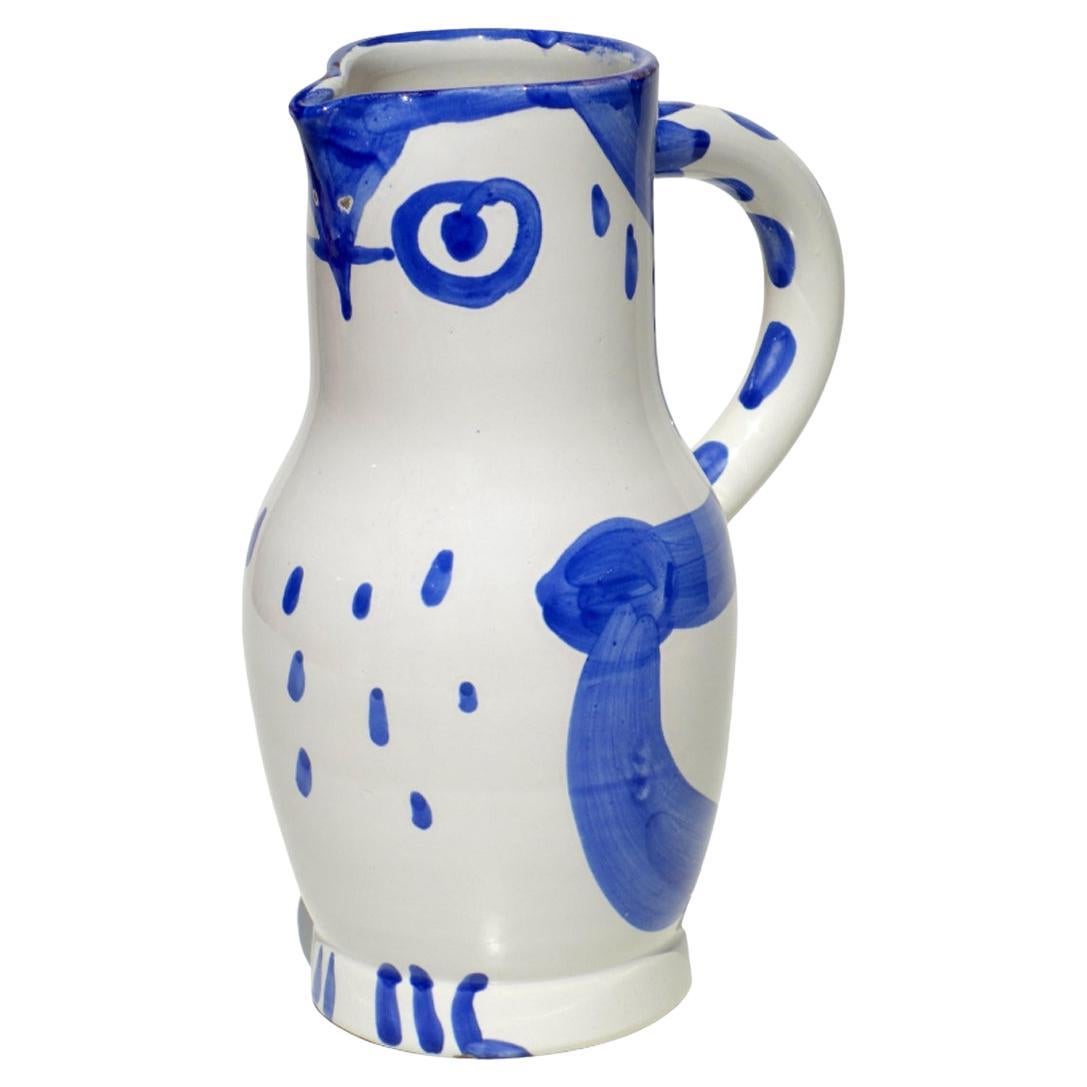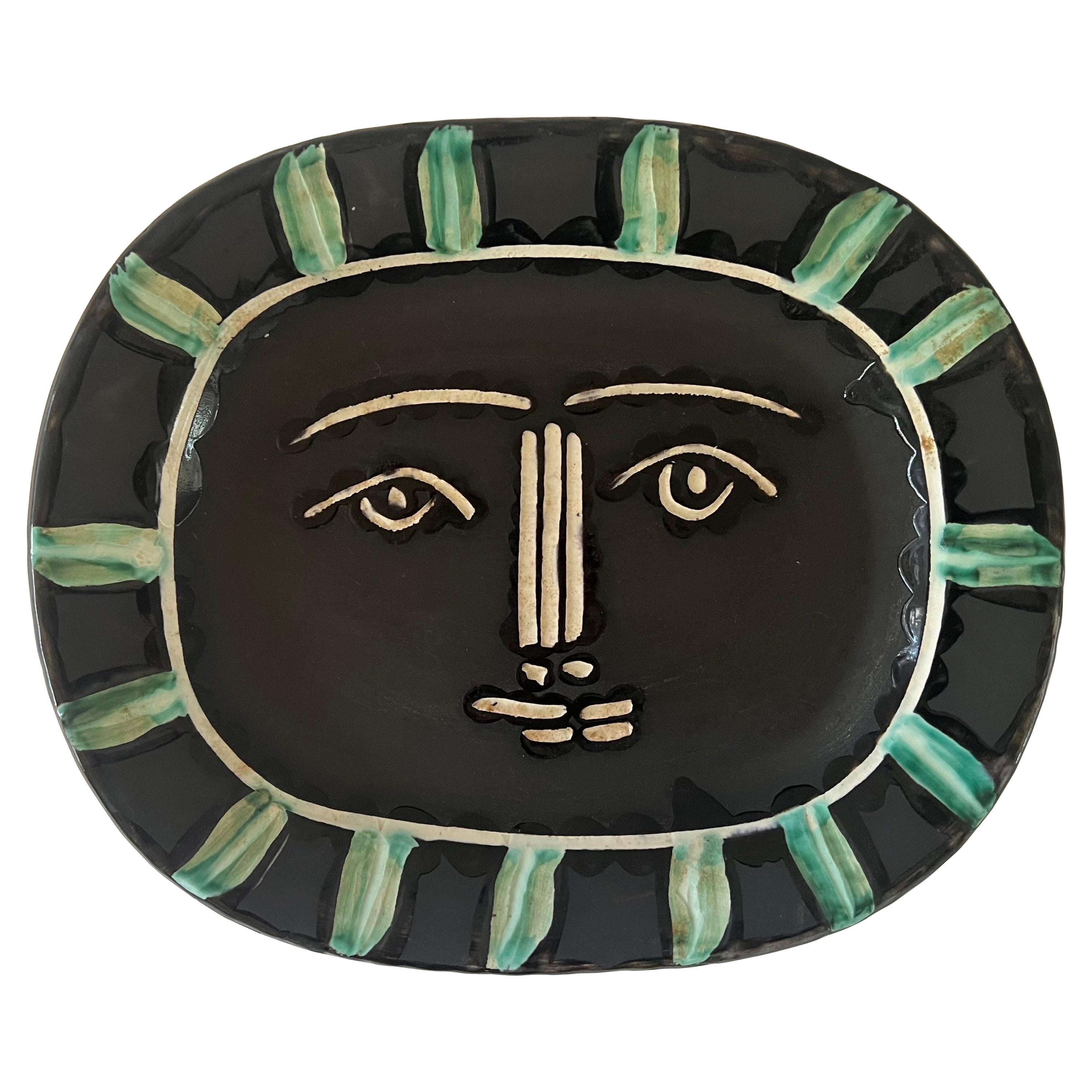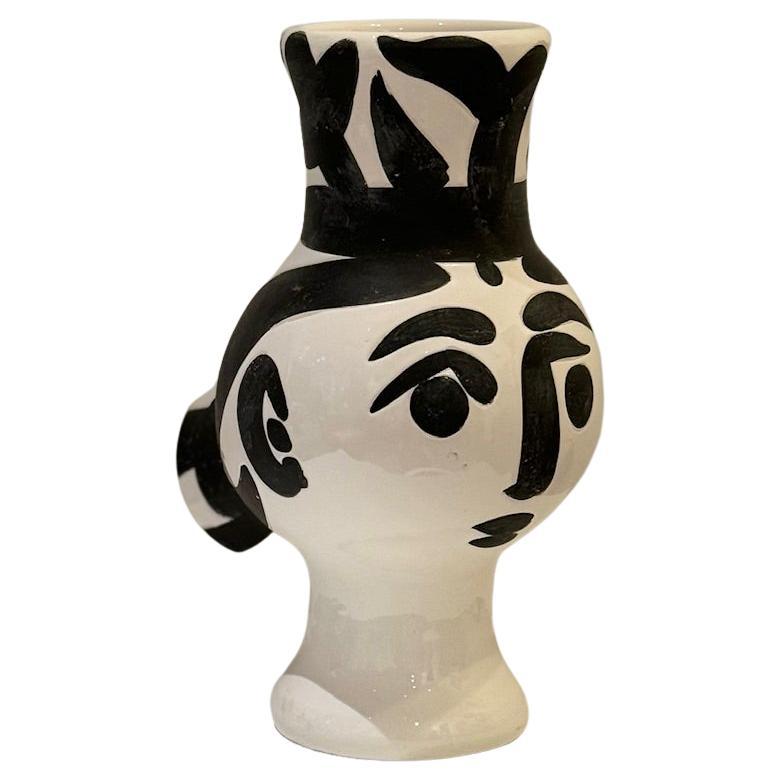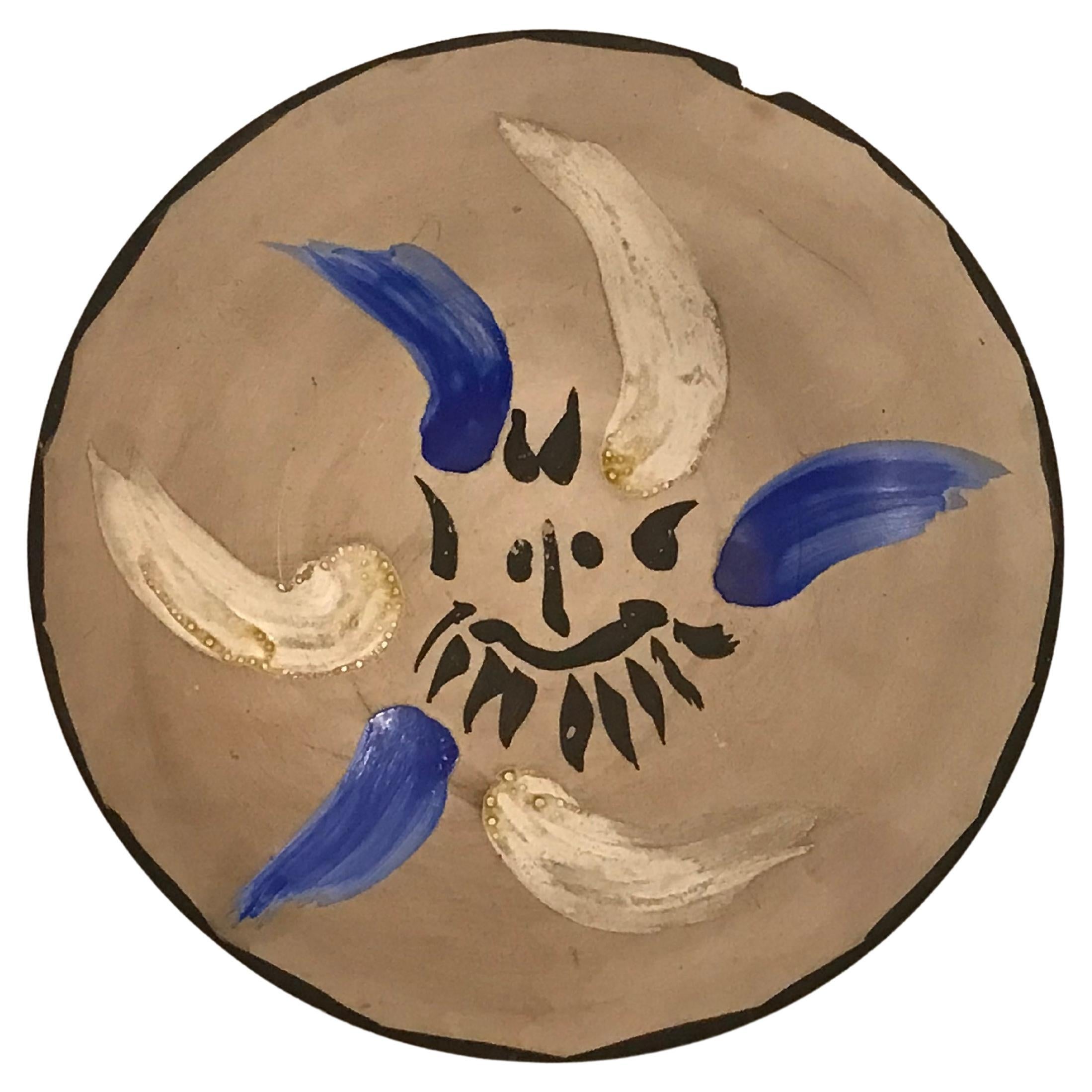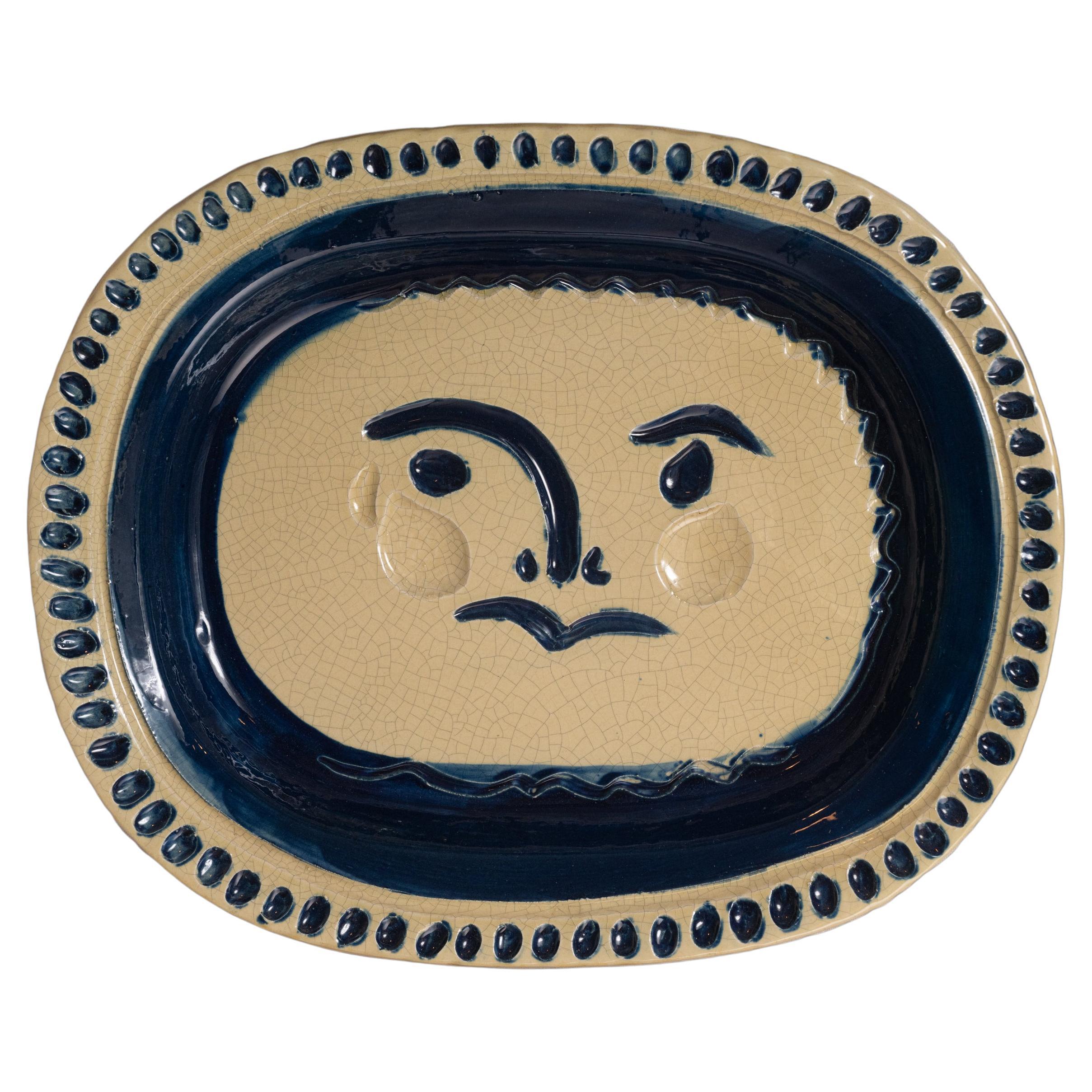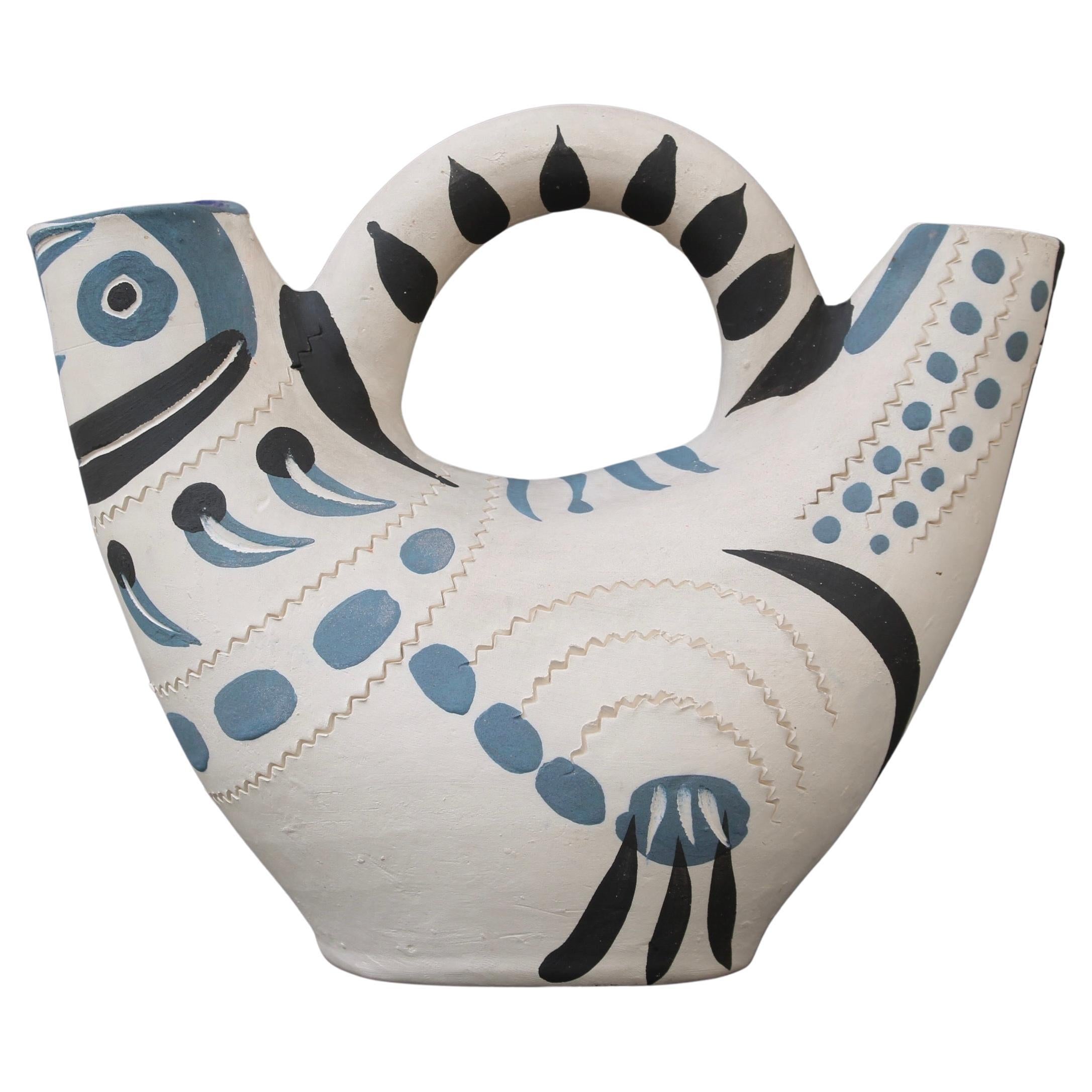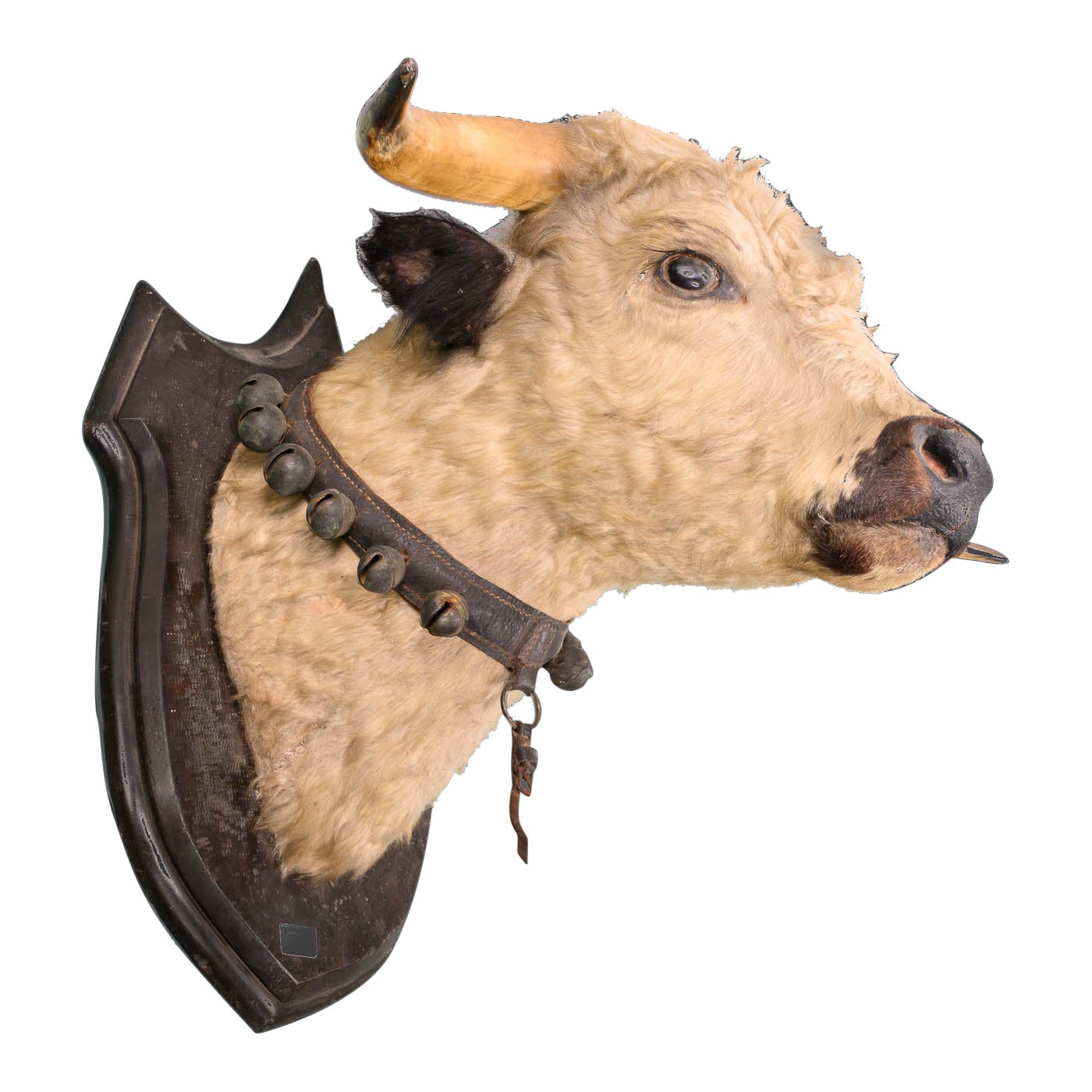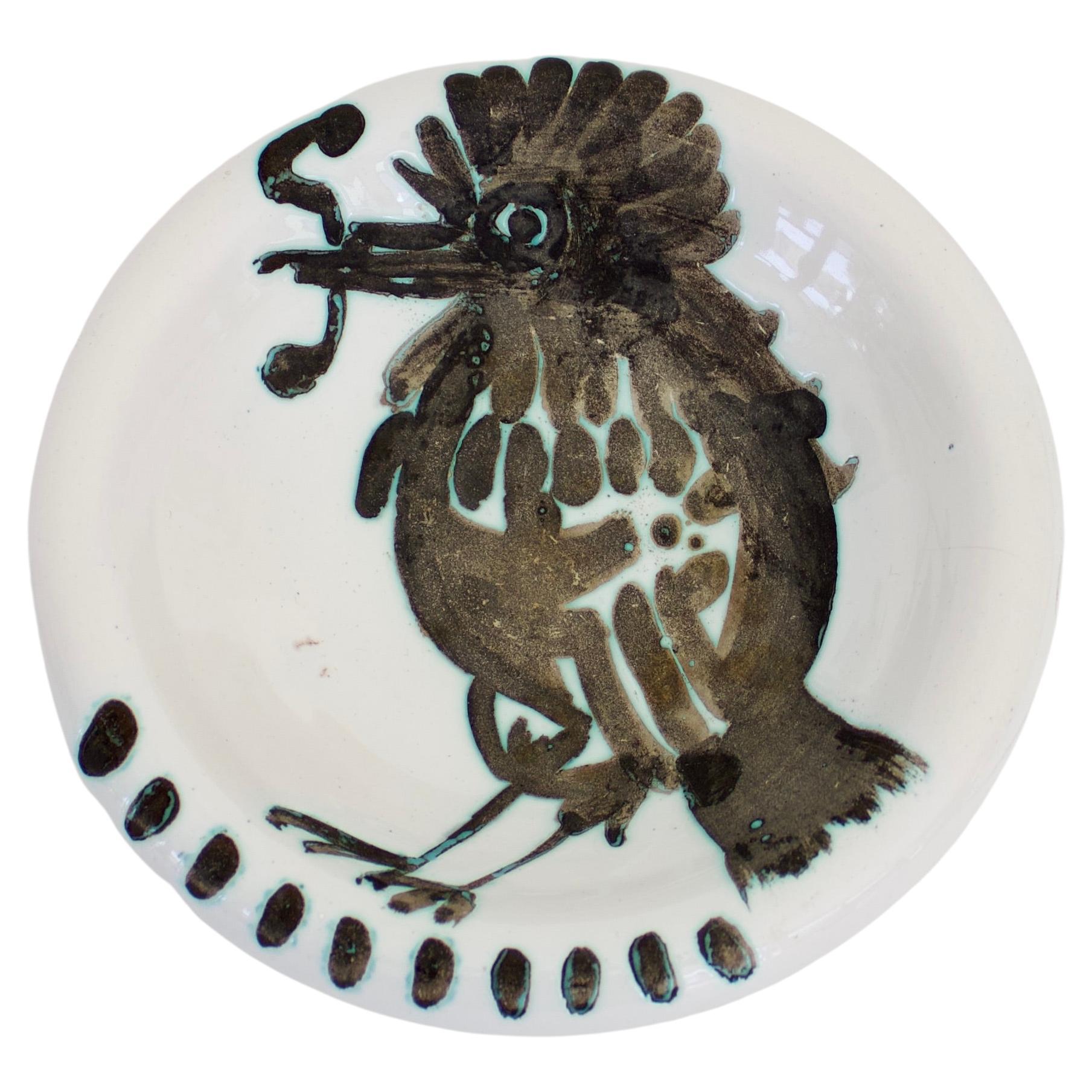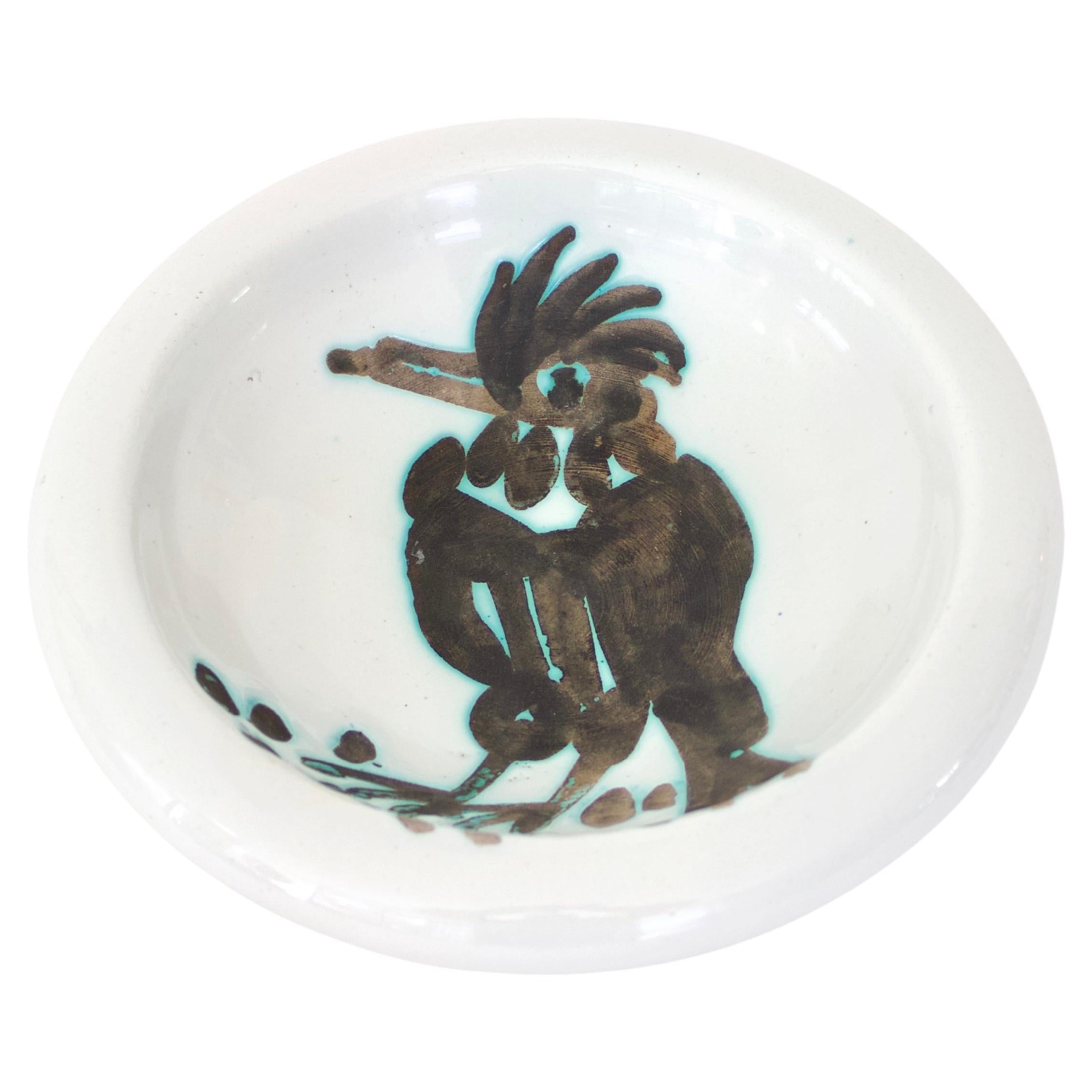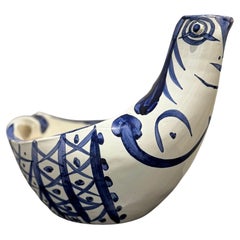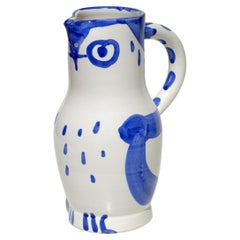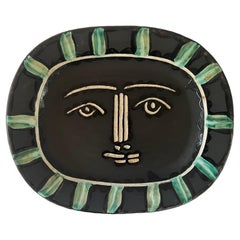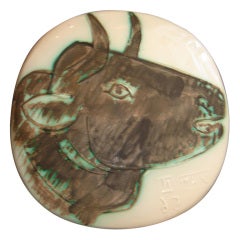
Pablo Picasso Madoura Ceramic Plate "Bull's Profile"
View Similar Items
1 of 9
Pablo Picasso Madoura Ceramic Plate "Bull's Profile"
About the Item
You May Also Like
- Pablo Picasso Ceramic Edition Madoura , Sujet poule 1954By (after) Pablo PicassoLocated in Paris, FRPicasso ( 1881-1973 ) Hen subject - 1954 (AR # 250) Turned shape piece , glazed earthenware clay with white & blue enamel , from an edition of 500, stamped "Edition Picasso" and "M...Category
Vintage 1950s French Mid-Century Modern Figurative Sculptures
MaterialsCeramic
- Pablo Picasso, Hibou 1954 Madoura Ceramic Pottery Pitcher SculptureBy Madoura, Pablo PicassoLocated in Brescia, ITPABLO PICASSO HIBOU 1954 Terre de faïence pitcher, painted in colors and glazed Edition of 500 Inscribed 'Edition Picasso' and 'Madoura', with the Edition Picasso and Madoura...Category
Vintage 1950s French Mid-Century Modern Animal Sculptures
MaterialsCeramic
- Ceramic Plate Visage Gris 'Grey Face' A.R. 206 by Pablo Picasso & Madoura, 1953By Madoura, Pablo PicassoLocated in New York, NYThe engraved and brush painted ceramic plate, Visage Gris (Grey Face) is one the most iconic pieces created by Pablo Picasso (1881 - 1973) at the Madoura workshop in Vallauris, France. It is said "all portraits are self portraits". In this work, we see Picasso's wistfulness, vulnerability and humor set within a beautiful image representing both the sun and the moon, the masculine and the feminine. Picasso mastery of form, image, composition and subtle color is evident in a work that resonates transcendence. Created in 1953, Pablo Picasso ceramic Visage Gris (Grey Face), 1953 A.R. 206 is a Madoura white earthenware clay, knife engraved under partial brushed glaze with decoration in engobes (green, black, white) from the edition of 500. This work is stamped with the 'Madoura PLEIN FEU' and ‘EMPREINTE ORIGINALE DE PICASSO’ pottery stamps on the reverse. Dimensions: 12 3/8 x 15 1/8 x 1 5/8in (31.4 x 38.3 x 4.1cm). Madoura was an artisan workshop created by Georges and Suzanne Ramie which collaborated with Picasso in the fabrication and hand painting of the works. Pablo Picasso designed 633 different ceramic editions between 1947 and 1971 at the Madoura workshop, with a number of variants and unique pieces resulting from these initial works. He began by creating simple, utilitarian objects such as plates and bowls, but later produced more complex forms, including pitchers and vases — their handles occasionally shaped to form facial features, or anatomical parts of his animal subjects. Picasso remains one of the highest-grossing artists at auction today, and the range of his ceramics means it's possible to find both a good investment and a beautiful object. Visage Gris is among the most important. A Short Biography follows: Pablo Picasso revolutionized the art world and to many is THE artist of the 20th century. He is famous for his role in pioneering Cubism with Georges Braque and for his melancholy Blue Period pieces. Original signed Picasso lithographs and prints are a sure investment. Madoura Picasso ceramics are highly collectible in their own right. As one of the most influential Modern artists of the 20th century, Pablo Picasso is renowned as a legendary artistic master to this day. Born on October 25, 1881 in Malaga, Spain, Pablo Picasso was a child prodigy who was recognized as such by his art-teacher father, who ably led him along. The small Museo de Picasso in Barcelona is devoted primarily to his early works, which include strikingly realistic renderings of casts of ancient sculpture. Picasso was a rebel from the start and, as a teenager, began to frequent the Barcelona cafes where intellectuals gathered. He soon went to Paris, the capital of art, and soaked up the works of Edouard Manet, Gustave Courbet, and Henri de Toulouse-Lautrec, whose sketchy style impressed him greatly. Then it was back to Spain, a return to France, and again back to Spain – all in the years 1899 to 1904. Before he struck upon Cubism, Picasso went through a prodigious number of styles – realism, caricature, the Blue Period, and the Rose Period. These distinguished styles are apparent in the unique original works as well as Picasso ceramics, lithographs, linocuts, and etchings that he created later in his life. The Blue Period dates from 1901 to 1904 and is characterized by a predominantly blue palette and focuses on outcasts, beggars, and prostitutes. This was when he also produced his first sculptures. The most poignant work of the style, La Vie (1903), currently located in Cleveland’s Museum of Art, was created in memory of his childhood friend, the Spanish poet Carlos Casagemas, who had committed suicide. The painting started as a self-portrait, but Picasso’s features became those of his lost friend. The composition is stilted, the space compressed, the gestures stiff, and the tones predominantly blue. The Rose Period began around 1904 when Picasso’s palette brightened and is dominated by pinks and beiges, light blues, and roses. His subjects are saltimbanques (circus people), harlequins, and clowns, all of whom seem to be mute and strangely inactive. One of the premier works of this period is Family of Saltimbanques (1905), currently in Washington, D.C. at the National Gallery, which portrays a group of circus workers who appear alienated and incapable of communicating with each other, set in a one-dimensional space. In 1905, Picasso went briefly to Holland, and on his return to Paris, his works took on a classical aura with large male and female figures seen frontally or in distinct profile, as in early Greek art. One of the best examples of this style is in the Albright-Knox Gallery in Buffalo, NY, La Toilette (1906). Several pieces in this new, classical style were purchased by Gertrude Stein (the art patron and writer) and her brother, Leo Stein. With his groundbreaking 1907 painting Les Demoiselles d’Avignon...Category
Mid-20th Century French Mid-Century Modern Figurative Sculptures
MaterialsEarthenware
- Bull's HeadBy Kelli BedrossianLocated in Paris, FRBronze with black patina Limited edition of 8 Signed and numbered 1/8 on the back Monogram of the artist left side Stamp of the founder on the back.Category
21st Century and Contemporary French Art Deco Figurative Sculptures
MaterialsBronze
$30,754 - Pablo Picasso Ceramic Edition Madoura , Wood-owl Woman Vase 1951By (after) Pablo PicassoLocated in Paris, FRPicasso ( 1881-1973 ) Vase - 1951 (AR # 119) Terre de faïence vase painted and partially glazed, from an edition of 500, stamped "Edition Picasso" and "Madoura plein feu" Height : 1...Category
Vintage 1950s French Mid-Century Modern Figurative Sculptures
MaterialsCeramic
- Ceramic Plate Picasso MadouraBy Pablo PicassoLocated in Los Angeles, CA1881 - 1973 What can I say about Picasso that hasn't already been written...? Only that I'm an admirer of an artist with so much passion and dedication. From the estate of the late Naomi Caryl Hirshhorn, daughter of the late art collector Joseph H. Hirshhorn of the 'Hirshhorn Museum and Sculpture Garden'. Selling "as is". Some chips and a crack. It can be restored or left as is for historical aesthetics or integrity like an old Etruscan piece of pottery. Ceramic with white glaze on the bottom with hallmarks, bisque glaze on top with painterly brush...Category
Mid-20th Century French Mid-Century Modern Decorative Dishes and Vide-Poche
MaterialsCeramic
Recently Viewed
View AllMore Ways To Browse
Decorative Spanish Ceramic Plates
Spanish Bull Sculpture
Picasso Bull Ceramic
Religious Sculptures
Shell And Bronze
Art Deco Charles
Unknown Bronze Sculpture
Black Green Art Deco
Antique Head Study
Sculpture In Art Nouveau
Sculpture On A Pedestal
Apprentice Furniture
Art Display Light
Black Terracotta
1930 Bronze Sculpture
Collection Of Marble Objects
Marble Square Base
Pair Polychrome
